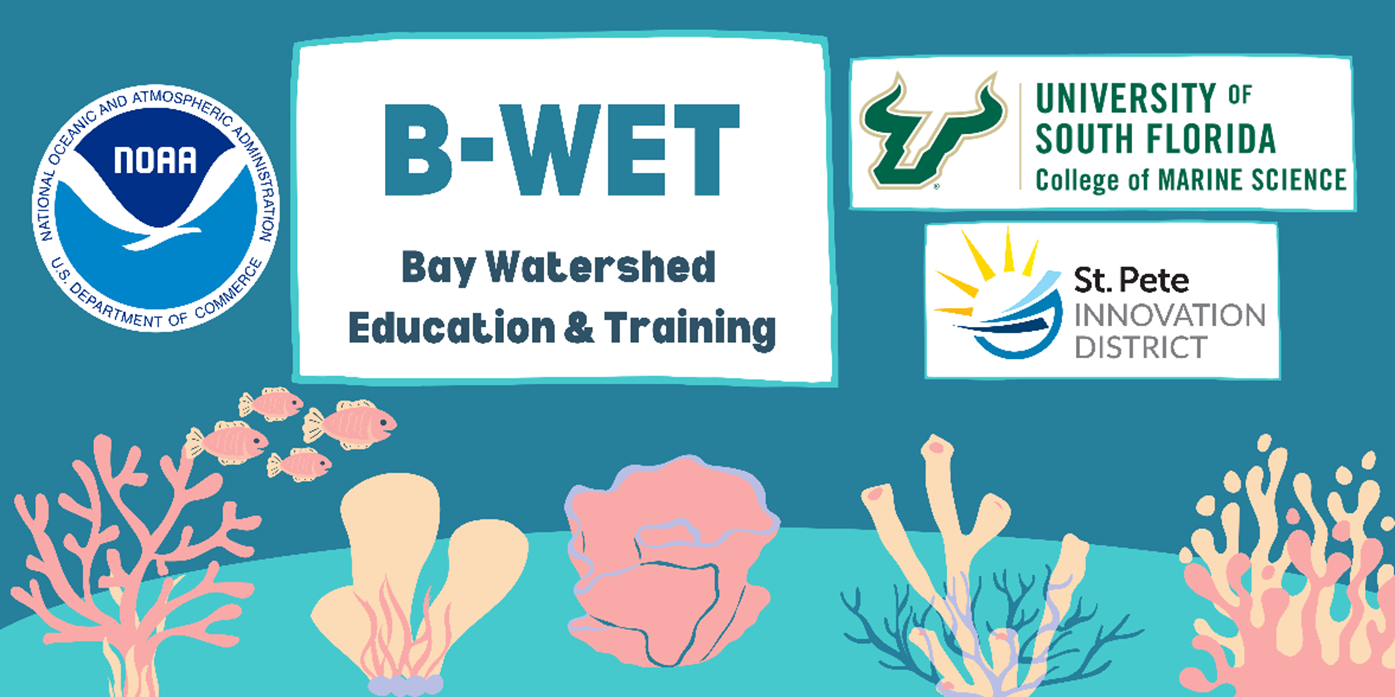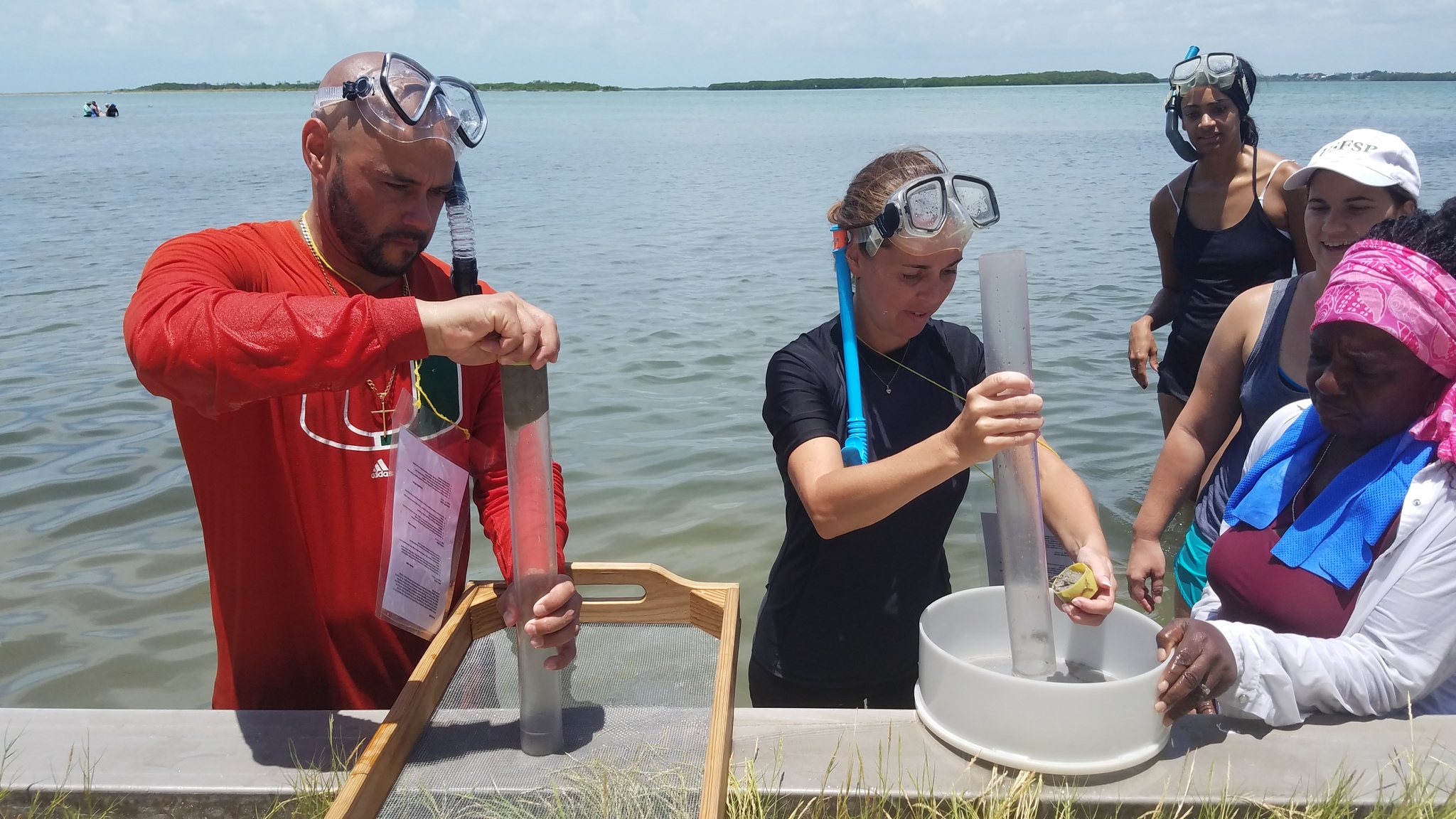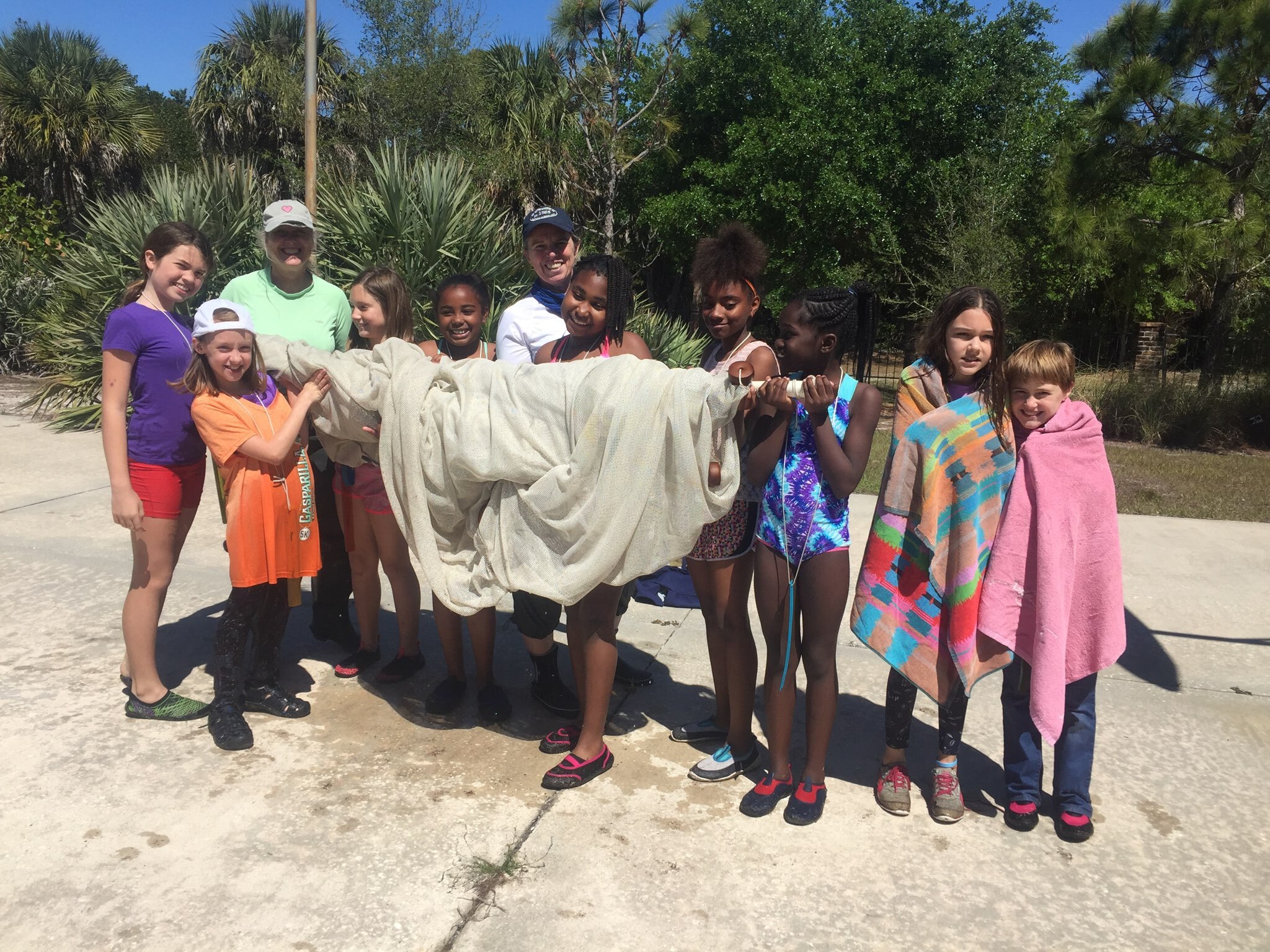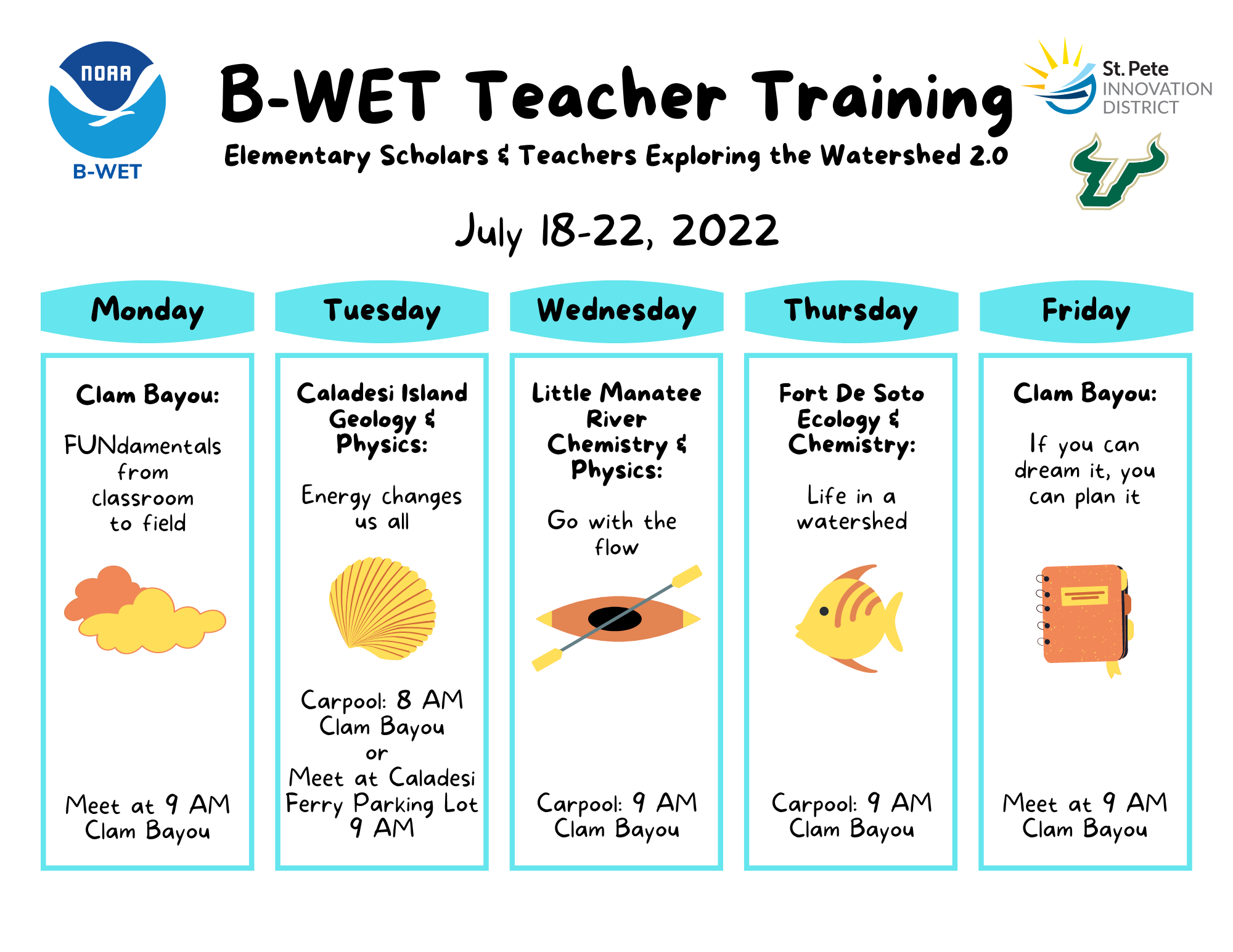Bay Watershed Education & Training
Overview

NOAA Bay Watershed Education & Training (B-WET) Program
Elementary Scholars & Teachers Exploring the Watershed
Summary of work:
Our most recent B-WET program is titled: Elementary Students and Teachers Exploring the Watershed 2.0. This program continues educating 4th and 5th grade students, young scholars, about what makes their home a unique and special ecosystem, and how people can influence the Tampa Bay watershed. The program component for teachers includes field-based, watershed Meaningful Watershed Educational Experiences (MWEEs), and practice facilitating watershed activities for students to do in the classroom.

Fort De Soto Sediment Cores with teachers.
Young scholars (4th and 5th grade students) engage in classroom watershed activities and environmental monitoring on school grounds, then explore their watershed directly, during MWEE field experiences at the Clam Bayou Preserve. Our program engages young scholars and teachers from Title I schools in south St. Petersburg, who serve large populations of underrepresented minority (URM) students. These are the schools adjacent to the Clam Bayou watershed. Twenty teachers and 320 students will directly participate in the MWEE field experiences at the Clam Bayou Nature Preserve.

Elementary students holding seine net after catching fish.
The primary objectives of the program are to provide 1) immersive, outdoor, field experiences for teachers that are anchored to academic standards and student achievement, 2) classroom integration of MWEE components that will follow the teacher’s outdoor MWEEs. The specific MWEE components include interdisciplinary learning across science, math, and language arts. The current 2.0 program 3) engages young scholars in outdoor field experiences using interdisciplinary, hands-on learning activities in the coastal Clam Bayou Preserve, provides practice with tools to monitor the outdoor environments in order to answer students’ questions and planning actions, and 4) enables young scholars to engage in environmental stewardship and action for the betterment of urban communities. At the elementary level young scholars investigate the locally relevant environmental issues of pollution and habitat restoration in urban communities.
Teacher Professional Development Schedule

BWET teacher training.